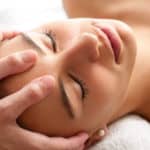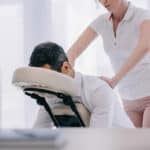 Want to earn continuing education credit for this article? Learn more.
Want to earn continuing education credit for this article? Learn more.
Iliotibial band friction syndrome is recognized as one of the most common lower-extremity injuries in athletes, especially in long-distance runners and cyclists. Casually referred to as runner’s knee, massage therapists are likely to encounter this inflammatory condition.
Also known simply as iliotibial band (ITB) syndrome, physiologists debate the actual pathology involved. While some understand this overuse injury to be associated with excessive friction between the ITB tract and the lateral femoral epicondyle, others suspect that ITB syndrome is a consequence of impaired hip musculature. Whether or not tightened hip muscles or localized friction are behind ITB syndrome, several bodywork techniques can help resolve this problem.
About ITB Syndrome
ITB syndrome is often observed in those who exercise vigorously. Upon knee flexion, the ITB moves posteriorly along the lateral femoral epicondyle. When excessively tight or stressed, the ITB rubs more vigorously within its groove to generate inflammation.
In runners, friction occurs near or just after foot strike during the contact phase of the gait cycle. Downhill running reduces the knee flexion angle and can aggravate ITB syndrome, while sprinting and fast running increase the knee flexion angle and are less likely to cause pain.
While the most prevalent symptom of ITB syndrome is lateral knee pain, other signs may include:
- Hip pain.
- Discomfort, which may radiate from the knee proximally or distally.
- Pain during strenuous activity; however, a case that has progressed may cause pain with walking.
- A tender point near the lateral femoral epicondyle.
- Pain elicited with active flexion-extension of the knee within the first 30 degrees, while the thumb presses over the epicondyle and ITB.
ITB Syndrome Causes
Even though there is little scientific support of ITB syndrome’s etiology, experts agree that it has many possible causes. In addition to an athletic injury from a change in surface, speed, distance and shoes, the following likely contribute to ITB syndrome:
- Limb length discrepancy
- Bow-leggedness (Genu varum)
- Over-pronation
- Hip adductor weakness
- Myofascial restriction
- Treatment
The basic principles of treating ITB syndrome are similar to any soft tissue injury. The following strategies help a majority of athletes with ITB syndrome return to their sport:
- Inflammation control with ice and anti-inflammatory medication
- Activity modification by avoiding aggravating motions
- Underlying problem correction by assessing and fixing biomechanical flaws
Additionally, bodywork has helped athletes of all abilities with ITB syndrome get back in their game faster.
As described in Leon Chaitow’s and Judith Walker DeLany’s Clinical Application of Neuromuscular Techniques, these four moves may help release a tightened iliotibial band:
- Along the tensor fascia latae, apply short gliding strokes, friction and static compression.
- Along the ITB, apply lubricated gliding strokes.
- For a shortened or fibrotic iliotibial band, apply a myofascial release technique that imitates a twig snapping motion.
- To release a hypertonic, shortened iliotibial band, create an alternating sequence by using the heel of one hand to alternately thrust against the IT band, while stabilizing it with the other hand.
Aside from myofascial release and neuromuscular therapy, a sports massage technique has documented success against ITB syndrome. As published in the December 2005 edition of The Journal of the American Osteopathic Association, moving the lower limb into a position of greatest comfort and then applying the osteopathic counterstrain technique can yield significant pain relief.
Despite its commonality in runners and cyclists, the ambiguity regarding ITB syndrome’s origins renders it a challenge for many health practitioners. However, adding massage therapy to a plan for reducing inflammation, ceasing the aggravating activity and correcting biomechanical contributors can bring a more rapid recovery. In particular, familiarity with neuromuscular therapy, myofascial release and the sports massage technique of strain-counterstrain may be the ideal recipe to bring clients with runner’s knee the pain relief they need.
Earn continuing education credit for this article contained in our Common Sports Injuries series. Click here to enroll.
Recommended Study:
Myofascial Release
Neuromuscular Therapy & Advanced Deep Tissue
Sports Massage















